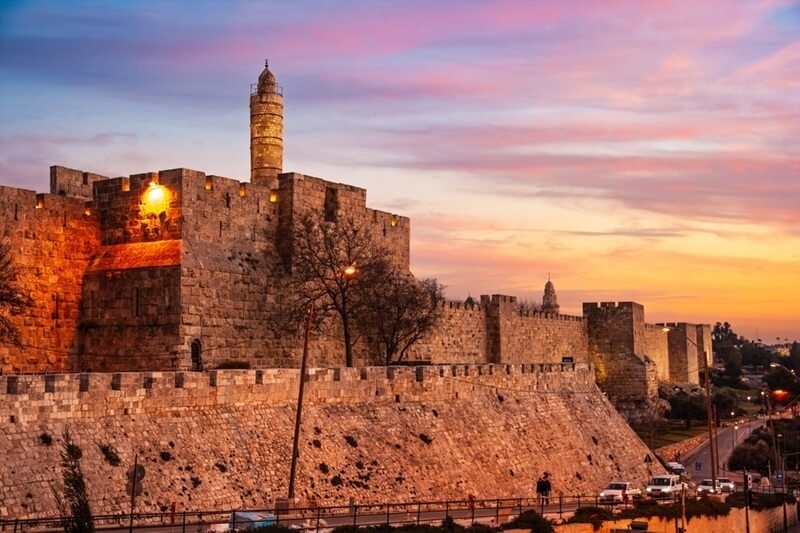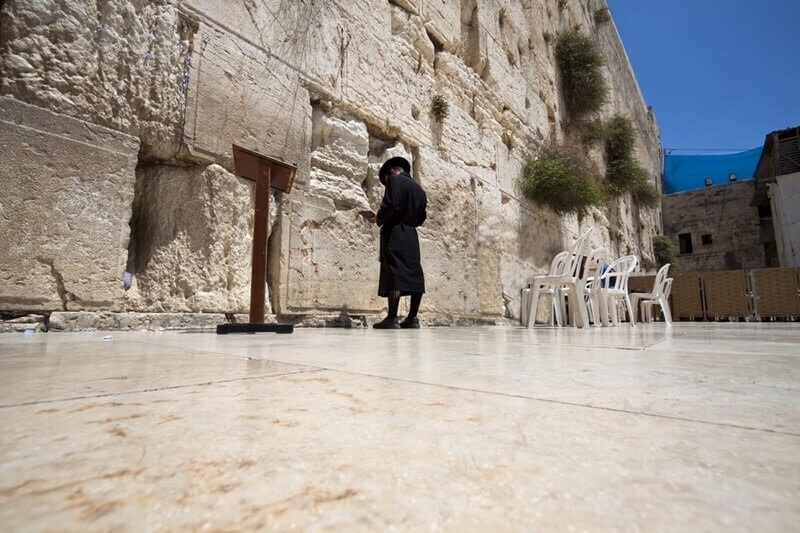
When you travel through biblical sites in Israel, you enter the pages of Scripture. This interactive Bible inspired travel guide will guide you through ancient cities, sacred shrines, and spiritual landscapes that have defined faith for centuries. If you are organizing a pilgrimage or religious trip, these holy sites in Israel are a must-see on your journey. Along the way, we’ll weave in spiritual tour Israel tips, practical advice on visiting biblical locations safely, and sample Israel faith tourism itineraries to guide your journey.
Visiting the biblical sites of Israel means visiting a land where history and religion are intricately intertwined in every stone. The narrative of prophets, miracles, and faith can be found in every region of the country, from the hills of Galilee to the deserts of Judea. This section outlines the key sites you will want to try to visit.
Jerusalem is the crown jewel of biblical sites in Israel. Within its walls are the Western Wall (the Kotel), the Temple Mount, and the Via Dolorosa, which leads to the Church of the Holy Sepulcher. The sites of crucifixion and resurrection make it a priority on any list of holy sites to see in Israel.
South of Jerusalem lies Bethlehem, which is home to the Church of the Nativity, built above the historic site of Jesus' birth. This is one of the most emotionally charged stops in any Bible-inspired travel brochure. Pilgrims will frequently travel from Jerusalem to Bethlehem, thinking about the annunciation, the shepherds, and the nativity scene.
In the Galilean town of Nazareth stands the Basilica of the Annunciation, marking the site where the angel Gabriel announced to Mary that she would bear the Son of God. As you explore biblical landmarks in Israel in Galilee, Nazareth anchors your spiritual perspective.
The peaceful waters of the Sea of Galilee call for reflection. On its banks, numerous miracles of Jesus happened. The nearby Capernaum is referred to as "Jesus' own city"—here, you can view the ruins of ancient synagogues and hear words resounding from the Gospels. These are central places on Israel's faith tourism routes.
Overlooking the Sea of Galilee, the Mount of Beatitudes marks the Sermon on the Mount. Moving on, in Tabgha, legend locates the miracle of the loaves and fishes. These open-air sites bring Scripture to life as you walk where Jesus walked.
The Jordan River is considered holy due to its connection with John the Baptist and Jesus' baptism. Some places are touristy (such as Yardenit), but Qasr al-Yahud on the West Bank is believed to be more site-accurate. For many pilgrims, baptism marks the pinnacle of their spiritual journey.
Jericho, the oldest city in the world, has a biblical legend—Joshua's trumpet walls came tumbling down here. The Mount of Temptation, nearby, is where Jesus was tempted after his 40 days of fasting. Both of these destinations enhance a well-rounded, Bible-inspired travel guide.
Although the stops are not considered "biblical," the Dead Sea and Masada exist at the intersections between history and faith. The region surrounding the Dead Sea is cited in Scripture, and Masada is linked to the Jewish struggle against Roman rule. These locations are common to pilgrimages through biblical sites in Israel.
Along the Dead Sea, Ein Gedi served as a sanctuary for David (1 Samuel 24). The Qumran Caves, located nearby, produced the Dead Sea Scrolls—works that validate biblical veracity. As you explore Israel's faith tourism itineraries, add these to enrich your scriptural knowledge.

Faith travel takes planning. Use these faith travel tips for your trip to Israel so that your trip is both safe and spirit-honoring.
Some sites are located in occupied zones or disputed zones. Always check for current travel advisories, and never enter restricted zones.
Israeli government and embassy sites have updates.
Choose a qualified pilgrimage tour operator with a track record. In places like Qasr al-Yahud and the West Bank, it is necessary to understand the area for your safety and commitment to local religious customs.
Most sacred sites where you're expected to dress simply long sleeves and knee-length covering, as needed. Always respect daily posted advisories and/or signs. Being respectful contributes to your overall experience.
Schedule the most popular biblical sites early in the morning or at the end of the day to give quiet contemplative time, improving your experience and photography at less busy times.
The Israeli weather can be brutal, particularly in the desert. Bring water, wear supportive walking shoes, and consider a sun hat. If there are health restrictions, make reservations accordingly.
A guided tour provides a richer understanding of Scripture and archaeology. However, for independent travelers, good maps and apps can help you discover holy sites in Israel at your own pace.
Places can be common to several religions. Always comply with regulations, such as no photos allowed in certain areas or during prayer hours.
Consider purchasing travel insurance that includes emergency evacuation coverage. Have local emergency contacts and your embassy contact on hand.
Apply just a few of these spiritual tour Israel tips, and your pilgrimage becomes safer and more prosperous spiritually.
In this section, we have showcased some of the more iconic biblical locations in Israel, and given a little context, history, as well as suggestions on how to visit.
When entering the Church of the Nativity, built by Helena in the 4th century, it is remarkable to stand here and think about Jesus' humble birth in a cave-like grotto. Read Micah's prophecy (Micah 5:2) before arriving. Consider also visiting Shepherds' Field, where angels announced good news to ordinary shepherds.
In Nazareth, the Basilica of the Annunciation features archaeological remains beneath it. St. Joseph's Church, located next to it, indicates the site of Joseph's workshop. As part of Israel's faith tourism packages, a morning stroll in Nazareth brings you closer to Jesus' childhood years.
In Capernaum, see the black basalt synagogue and Peter’s house, thought to be his residence. In the nearby Tabgha, mosaics recall the feeding of the 5,000. On the Mount of the Beatitudes, pray over the Lord's Prayer and the Beatitudes themselves with panoramic views of Galilee.
At Qasr al-Yahud or Yardenit, many choose to be baptized. The peaceful setting is sacred for prayer. Some of the monks follow in the footsteps of John the Baptist to find renewal in the waters where Jesus was baptized.
Ride the cable car or climb the Mount of Temptation, where Jesus fasted for 40 days. Stand in the remains of Jericho and envision Joshua's horn-blast walls collapsing. These sensational stories ground your faith in story and location.
Float on the Dead Sea's salty waters and walk Masada, Herod's desert palace and stronghold of Jewish resistance. Desert surroundings provide time for prayerful interludes. Add a nature hike in Ein Gedi, where David fled from Saul.
Stop by Qumran, where you can ponder the discovery of the Dead Sea Scrolls, which contain the earliest known Hebrew copies of Isaiah and other biblical books. This forceful connection between word and world solidifies your pilgrimage in both academia and spirituality.
Your religious pilgrimage must also be safe. Here are some additional tips for safely visiting biblical sites.
Choosing the right guide makes your travel experience worthwhile and safe. Here are a few things to look out for:
Competent operators can incorporate the holy sites to be visited in Israel, Israel-escorted faith tourism itineraries, and safety features into one seamless, spiritually fulfilling experience.
Visiting biblical sites in Israel is not tourism - it is a journey in time, Scripture, and your own faith. When you stand where prophets taught, walk where Jesus healed, or float on the Dead Sea contemplating Psalm 139, the ancient page and your own spiritual life intersect.
Every sacred destination to visit in Israel is more than merely a suitable place for a photograph—each one designates a spiritual location. A faith-based travel guide leads to a deeply felt connection; an Israel faith tourism itinerary is where to plan around travel; use Holy Land spiritual tours to focus on the change, not the travel, and learn how to visit biblical destinations safely.
May your sacred journey be safe, transformative and last forever.
This content was created by AI